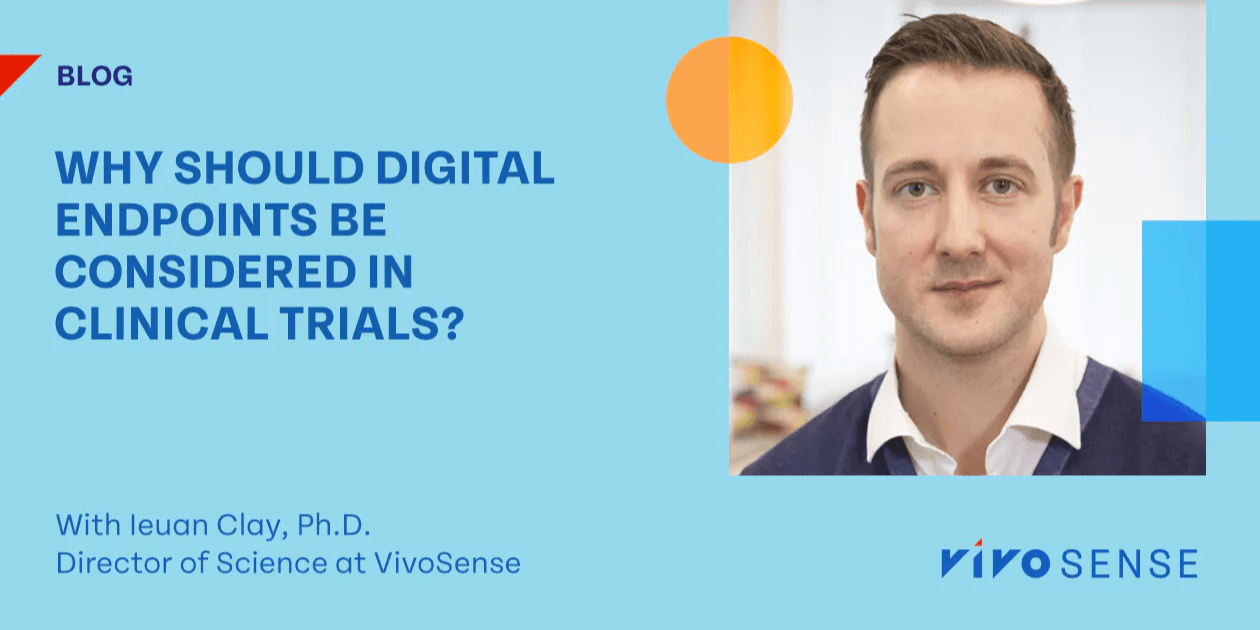
Click to Watch the Full Episode
Read the Full Story here
The traditional clinical trial model is often characterized by exorbitant costs, long timelines, and low success rates, thus demanding innovative reforms. Consequently, VivoSense, a leader in digital health technologies (DHTs), is developing and implementing DHT-based evidence from wearable sensors to enhance clinical research efficiency and efficacy.
Dr. Ieuan Clay, Director of Science at VivoSense, highlights the benefits of integrating DHT-based evidence into clinical trials. This integration can make trials faster, less costly, and more patient-centric.
Key Benefits of Digital Endpoints:
- Continuous Monitoring: DHT-based evidence from wearable sensors provides real-time, objective data from patients’ everyday lives, offering a clearer picture of disease progression and patient well-being.
- Cost and Time Efficiency: Furthermore, using DHT-based evidence can reduce sample sizes and trial durations, thereby cutting costs and speeding up decision-making processes.
- Patient Engagement: Moreover, these technologies foster greater patient engagement and improve quality-of-life assessments, which are valued by regulatory bodies like the FDA.
Implementation Value of DHT-based Evidence Across Drug Development Phases:
- Phase I: Continuous monitoring for safety insights and early detection of adverse events.
- Phase II: Provides detailed data for quicker evaluations of drug effectiveness and patient-centric endpoints.
- Phase III: Offers real-world data supporting market authorization and improved drug positioning.
- Phase IV: Ensures ongoing post-market surveillance with continuous insights into long-term drug effects.
Practical Considerations for DHT-based Evidence Integration:
- Early Planning: It is crucial to engage early to tailor DHT-based evidence to specific study needs.
- Technology Selection: Additionally, assess the health outcomes and the technology’s capacity to capture them accurately.
- Patient-Centric Design: Ensure ease of use and integration into daily routines.
- Symptom-to-Sensor Mapping: Ensure clinically meaningful measurements.
- Regulatory Compliance: Meet regulatory standards and validate DHT-based evidence.
- Foundational Research: Conduct preliminary studies to establish the validity and relevance of novel DHT-based evidence.
Future Directions:
Dr. Clay is optimistic about the future of distinguishing DHT-based evidence from the hardware itself in clinical trials. Technological advancements and regulatory recognition will drive this future. Additionally, multi-sensor devices and standardized frameworks from organizations like the Digital Medicine Society and the FDA support broader adoption. Consequently, these advancements promise to transform clinical trials to better reflect real-world patient experiences.
In summary, integrating DHT-based evidence can enhance data quality, patient engagement, and overall efficiency of clinical trials, ultimately leading to more effective and personalized therapies.
Ieuan Clay, PhD.
Ieuan Clay, PhD, VivoSense Director of Science focuses on translating innovations in the ability to collect data into insights which improve decision making. Combining strategy and science, Ieuan leads research which develops capabilities or products. His current focus is on how initial progress in digital health can be built upon to create a more engaging, holistic and valuable experience for patients, delivering validated, qualified outcomes that help individuals manage and navigate their own health journey.

